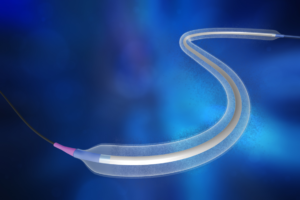
New clinical evidence for the use of the Luminor drug-coated balloon (DCB; iVascular) in complex lesions with long-term follow-up has been presented on the main session of the Leipzig Interventional Course 2021 (LINC; 25–29 January, online). These outcomes show Luminor DCB has “outstanding performance” in the most common peripheral lesions.
Evidence in femoropopliteal arteries: “Amazing” results from EffPac trial at three-and-a-half years follow-up
Ulf Teichgräber (Jena University, Jena, Germany), principal investigator of the EffPac Trial, explained during his presentation at LINC that at three-and-a-half years, a significant clinical and haemodynamic improvement was achieved, with an “amazing” target lesion restenosis (TLR) rate (freedom from TLR: 90.1%). He also remarked that no increased risk of death was detected, and that all-cause mortality was similar to plain balloon angioplasty. Luminor demonstrates “good” efficacy and safety outcomes, even at long-term follow-up, he said.
Evidence in complex and long femoropopliteal lesions: TINTIN trial two years follow-up
Investigating the performance of the Luminor DCB in complex and long femoropopliteal lesions, the newly-released two-year follow-up outcomes of the TINTIN trial corroborate the efficacy of the Luminor DCB. In lesions with a main length of 24.3cm, the combined therapy of Luminor and the iVolution self-expanding stent obtained a primary patency of 90.5% at one-year, and freedom from TLR of 89.4% at two years. Koen Deloose (AZ Sint Blasius, Dendermonde, Belgium), principal investigator of the trial, stated that: “The combination of vessel preparation, DCB, and self-expanding stent is the key to success in real life lesion treatment”.













